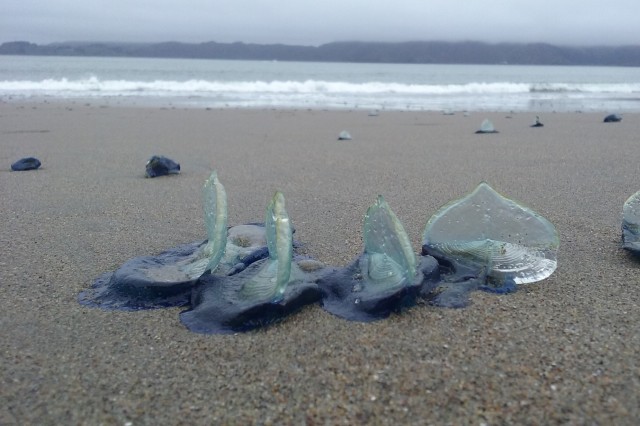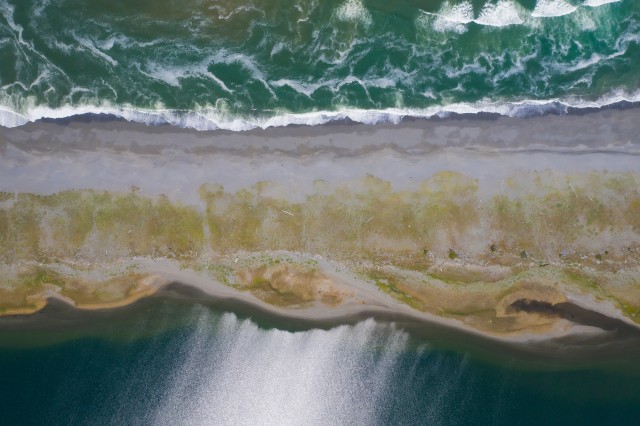Rare Purple Snail Lands Here
The shells of a violet-colored sea snail, Janthina janthina, washed up on SoCal beaches recently.
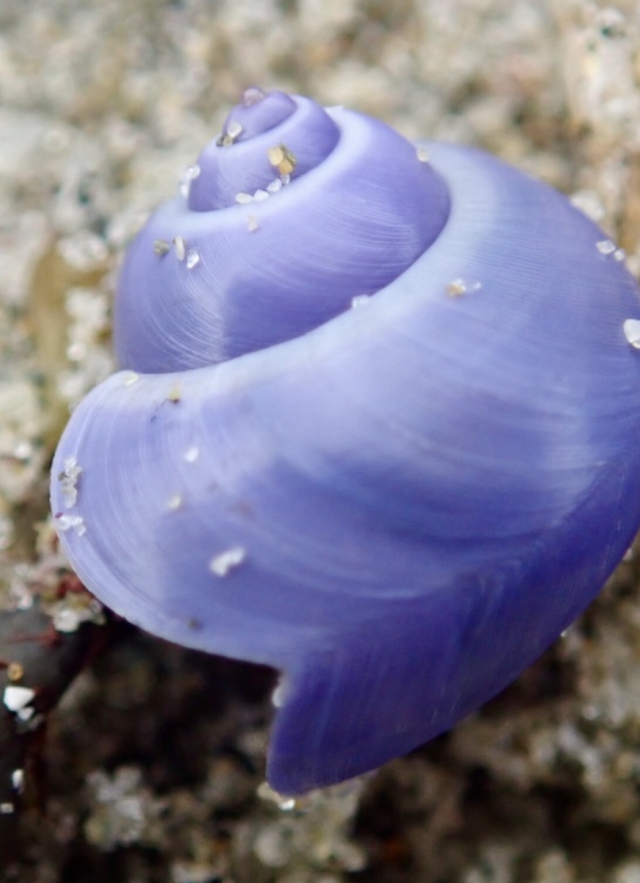
Most people think about snails living on rocks on land. But many are pelagic (they live in the open sea), which is why it was so surprising when many ocean-dwelling purple colored snails, Janthina janthina, washed up on several Southern California beaches in July 2025.
It was also rare to see the shells of this purple snail on the beach because it lives in tropical waters, where the sea temperature is much warmer than in coastal California. But these tiny thumb to pinky-sized snails are drifters, so they could have arrived here on a warm pocket of water.
“This species never touches a hard surface and normally floats on open water its whole life," said Jann Vendetti, Associate Curator of Malacology at NHM, "They are going with the flow so a current brought them here." She added that their locomotion is wonderfully weird. This species of sea snail travels on the surface of the ocean upside down and makes a “bubble raft” of mucus as a flotation device.
How do they get their beautiful hue? Likely from the blue blobs they serendipitously consume as they bob. Janthina janthina eats a jellyfish relative called Velella velella, aka “by-the-wind sailor” (another pelagic species) when they are fortunate enough to bump into them.
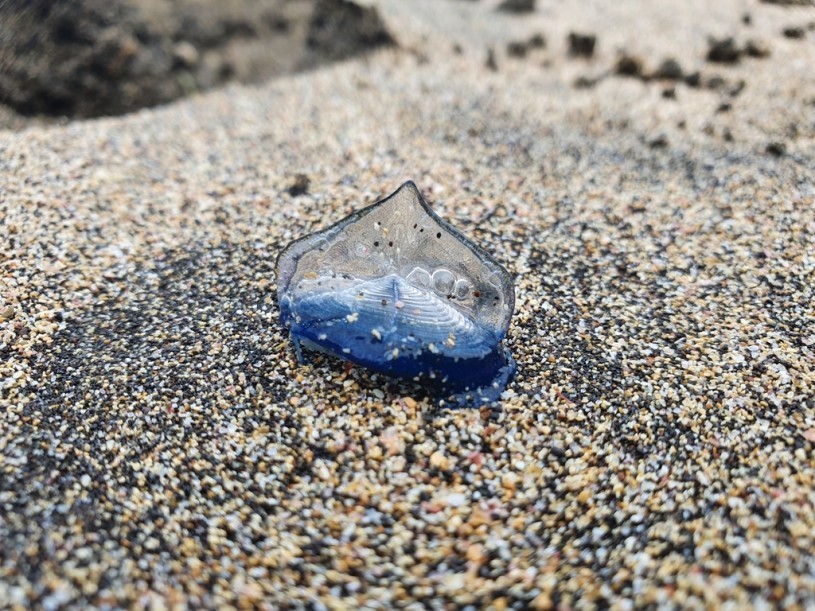
Hiding in the wide ocean
In order to avoid getting eaten themselves, these snails have evolved a clever camouflage technique called countershading. One side looks purple and the other is more white, Vendetti says.
So, if a predator in the ocean is looking up, the water looks opaque and the snail would blend in more in a white shell. A predator in the sky might not see the purple shell amid the blur of blue water. So they have a cloak of invisibility from both directions.
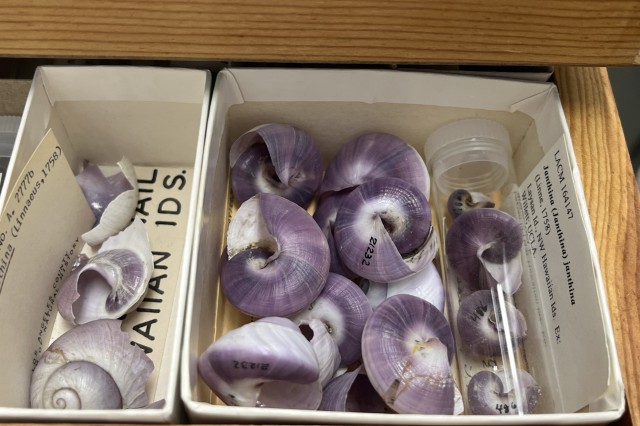
A drawer of Janthina janthina shells. There are more than 200 lots of purple snail shells in the museum's Malacology Collection.
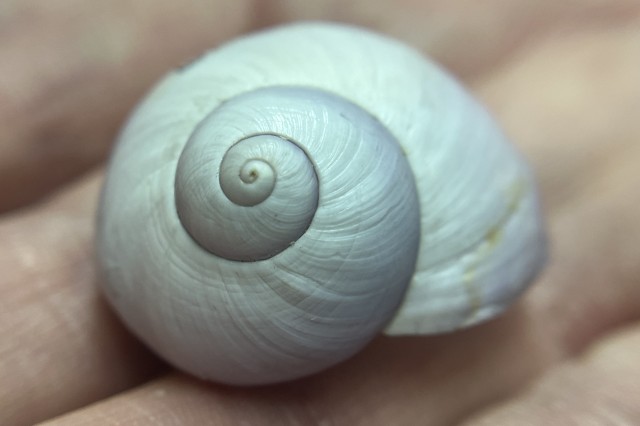
The species employs a camouflage technique called countersharding. If you’re a predator in the ocean and looking up, the water looks opaque so they blend in more in a white shell.
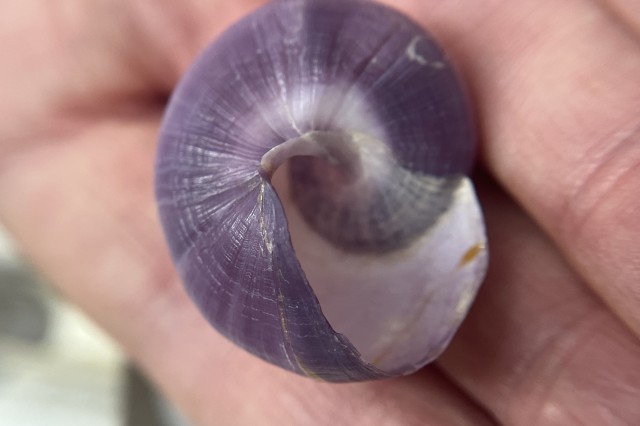
This side up. A predator in the sky might not see the purple shell amid the blur of blue water.
1 of 1
A drawer of Janthina janthina shells. There are more than 200 lots of purple snail shells in the museum's Malacology Collection.
The species employs a camouflage technique called countersharding. If you’re a predator in the ocean and looking up, the water looks opaque so they blend in more in a white shell.
This side up. A predator in the sky might not see the purple shell amid the blur of blue water.
The Natural History Museum has more than 200 lots in its Malacology Collection—there are five living species. Some lots contain 1,000-plus specimens. The collection contains large drawers of Janthina janthina found around the world, including in Florida and Hawaii in the U.S., as well as New Zealand, East Africa, and South Africa.
There’s no evidence there was a warming event in the ocean that brought the purple snails to lay in the Southern California sand this summer. But these arrivals might start becoming more common if we get warmer currents of water offshore in the future.
Take a deeper dive and watch NHM's Malacology Curator talk more about this purple snail in this video:
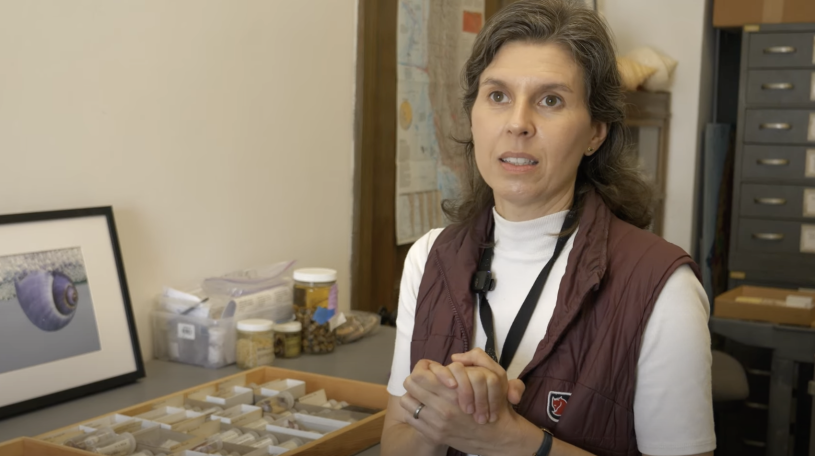
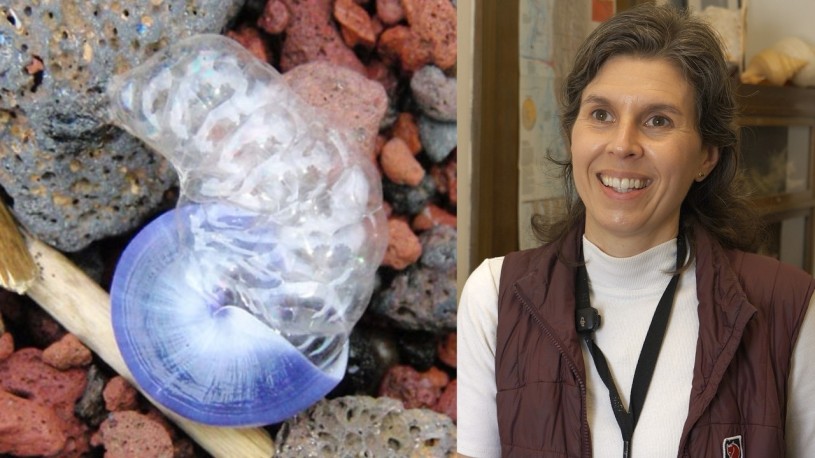
If you find yourself catching wind of purple snails or blue blobs while watching a sunset, be sure to snap some photos for iNaturalist! Every observation helps researchers learn more about life on our planet.
